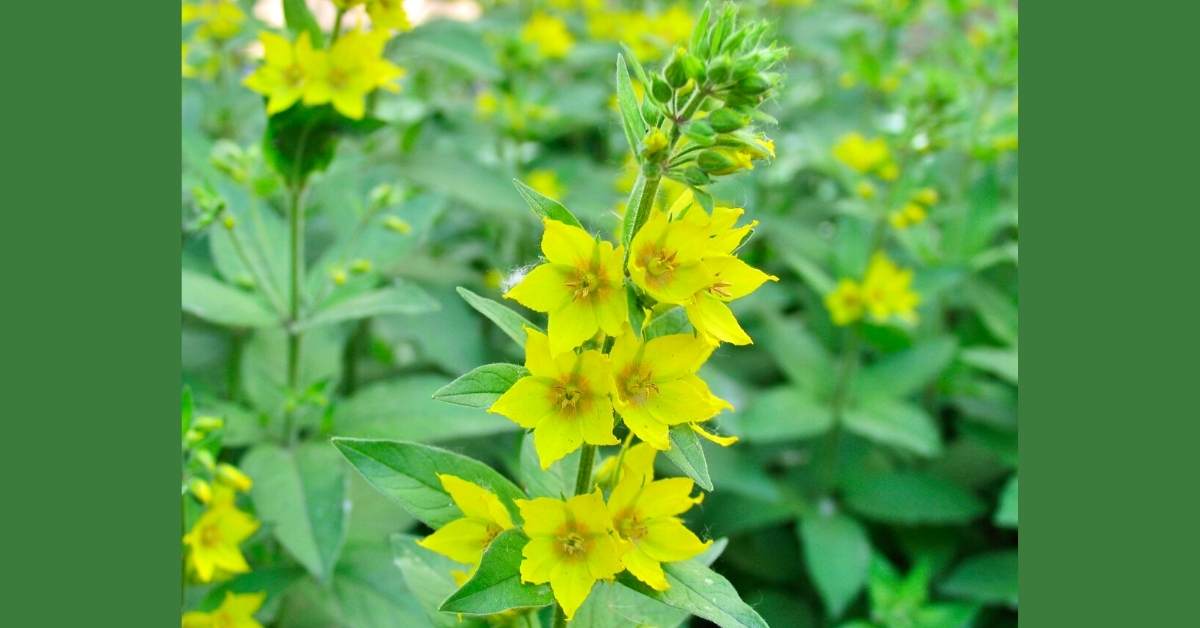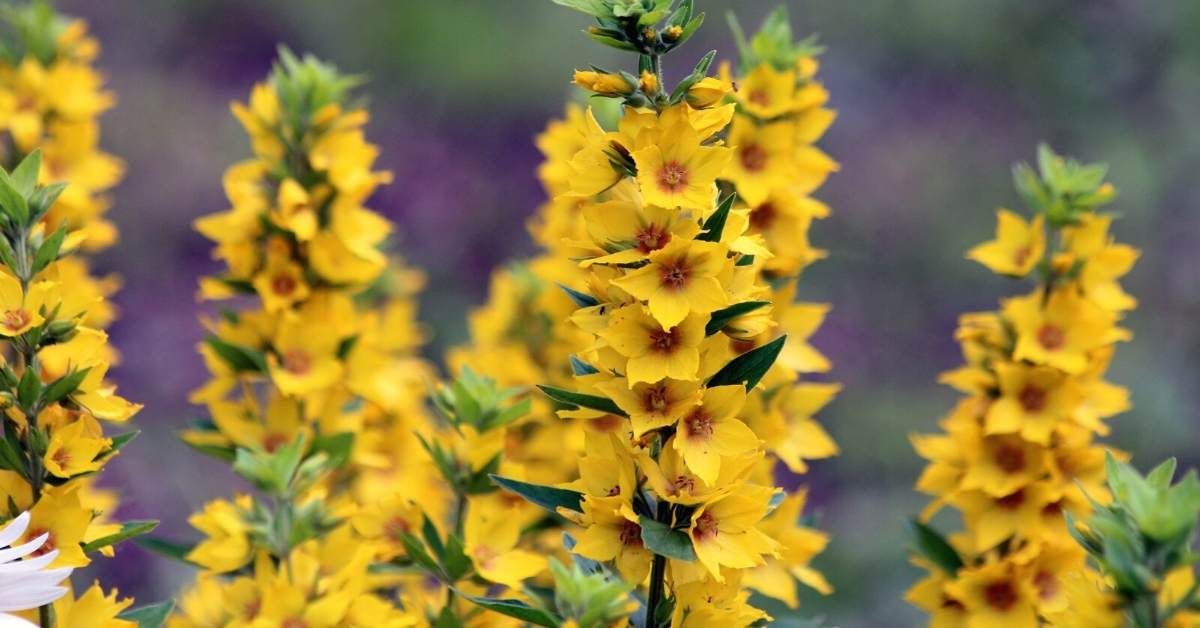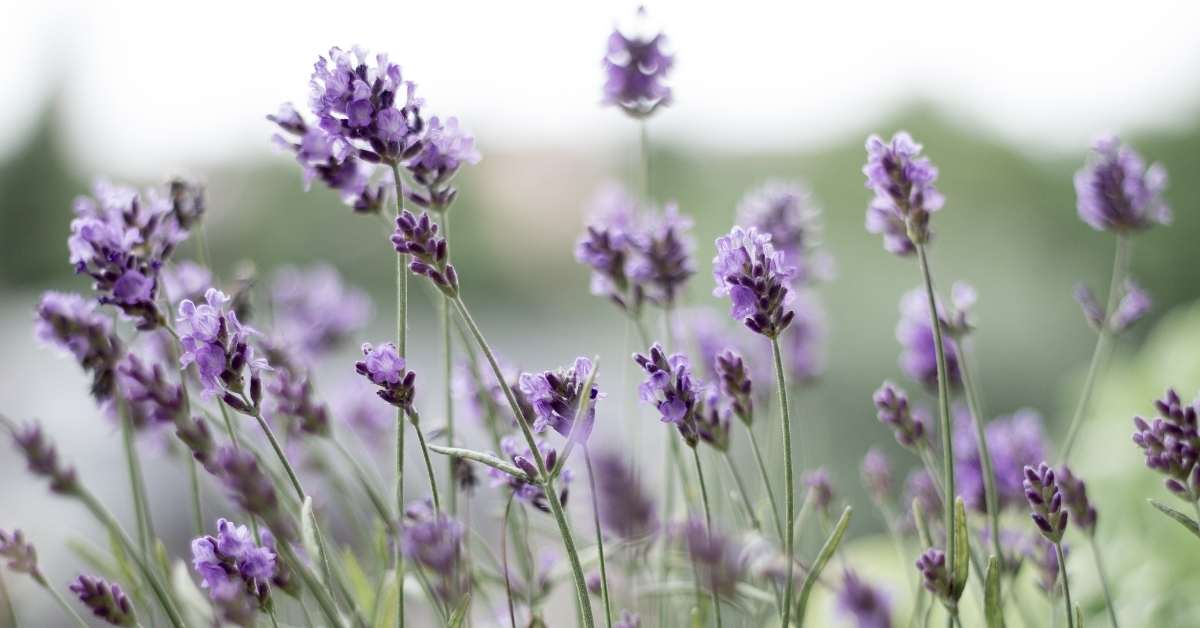Lysimachia plant (Centunculus L) is one of those plants that will almost survive – indeed thrive – in any garden situation.
Put this plant in a damp garden, and it will think it has died and gone to heaven.
Origin of Lysimachia
Lysimachia (the genus Felberich), also known as the loosestrife, includes over 150 species native to Eurasia, North America, and South Africa. In addition to creeping and upright growing perennials, there are also sub-shrubs among them.
The ornate flowering perennials include the Yellow Loosestrife (Lysimachia punctata) and the Gooseneck Loosestrife (Lysimachia clethroides), Creeping Jenny (Lysimachia nummularia) has made a name for itself as a vigorous ground cover.
While the yellow-flowered species come mainly from Europe and North America, the white-flowered representatives often come from East Asia. Botanically, the species and varieties of the genus Felberich belong to the primrose family (Primulaceae).
Appearance
The representatives of the genus Lysimachia are primarily upright or prostrate perennials, but there are also low subshrubs among them.
The leaves are predominantly narrow, often with glandular hairs and arranged opposite, whorled, or alternate.
The flowers are usually five-fold, consist of calyx and crown and open in terminal panicles, umbels, grapes, or ears. For the most part, they shine yellow, as is the case with Yellow loosestrife; some species also have white, purple, or pink flowers.
The flowering time of the insect-friendly plants is often in the summer months. After the pile, spherical capsule fruits develop.
Planting

An excellent time to plant loosestrife is spring or autumn.
Attention: Some species like the runners-forming Yellow loosestrifes are extremely vigorous – it is, therefore, essential to take the specified planting distances into account.
How To Grow Lysimachia Plant
Put it in the ground.
But seriously, folks. This is a plant that thrives in a wide range of garden conditions, from moist soils to borderline sandy soils. I’ve trialed it on all of them, and there’s no problem. It grows much faster (don’t we all?) on fertile and moist soils but have no standing water.
I suspect that being submerged will not make them happy, but bog gardens or damp pond-side gardens are their strength.
Growing Location And Soil
They like full sun, but may also thrive in partial shade. Part shade in dry soils isn’t a great idea, but they will live there. The problem in this situation is that the leaves tend to get sparse and fungal-infected, so they wind up looking pretty ratty.
Propagation
Easiest by division. And once established, this plant will give you a lot of divisions.
Hardiness
Generally, USDA zone 3-4. I never lost one in USDA 4.
Care tips
The wild perennials are very easy to care for and often only need to be sufficiently watered if the drought persists. Occasional fertilization with compost is recommended in spring.
The Yellow Loosestrife and Gooseneck Loosestrife, which tend to overgrow, can be cut back if necessary. A division is advisable in spring or autumn.
Winter protection
In our latitudes, loosestrife is usually sufficiently hardy and does not need winter protection; they can freeze back a little in severe winters. When planting in autumn, a cover made of brushwood protects the freshly planted specimens.
Concerns
Almost all varieties and species I ever grew were rampant spreaders and should not be allowed into a good garden. They spread by underground rhizomes and quickly and efficiently invade every other part of the garden.
But they are pretty plants.

Use
Tall Lysimachia species such as the Lysimachia vulgaris and Lysimachia punctata are beautiful accompanying perennials suitable for the edges of wood and water. If there is enough moisture, they also cut a beautiful figure in borders.
The Creeping Jenny can also be used as a ground cover on the edge of the wood and in the water garden, for example, on the edge of a garden pond or along a stream. Some flower beauties are also often used as cut flowers.
Lysimachia Varieties
L. Ciliata “Firecracker” is a 36-inch tall bronze foliaged variety that was slightly more open-leaved in my garden than the L. punctata. Bronzy leaves and yellow flowers make an excellent combination.
L. clethroides or gooseneck loosestrife is a white flowering species, and the individual flowers are bent over, resembling a gooseneck. 36-inches tall, blooming mid-summer,
L. punctata or yellow loosestrife flowers yellow in mid-summer and reaches 24 inches tall.
L. punctata ‘Alexander’ is a variegated green-white foliage variety of the above.
L. punctata’ Golden Alexander’ is a variegated gold-green variety of the above
I strongly advise you to check our other perennial plant articles before you leave.

